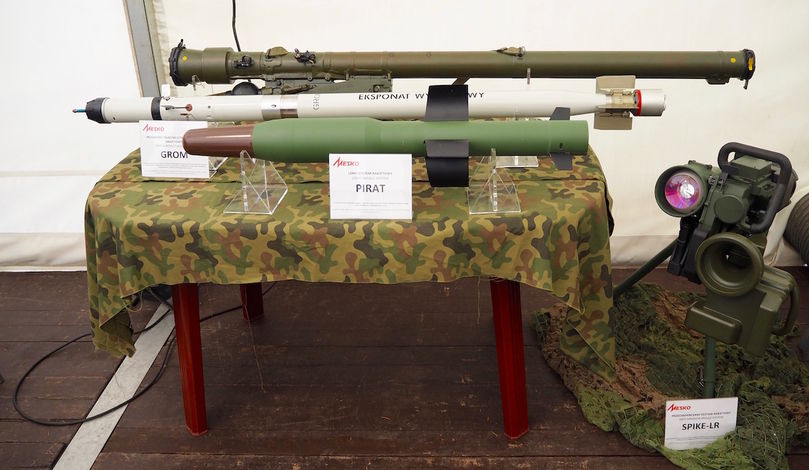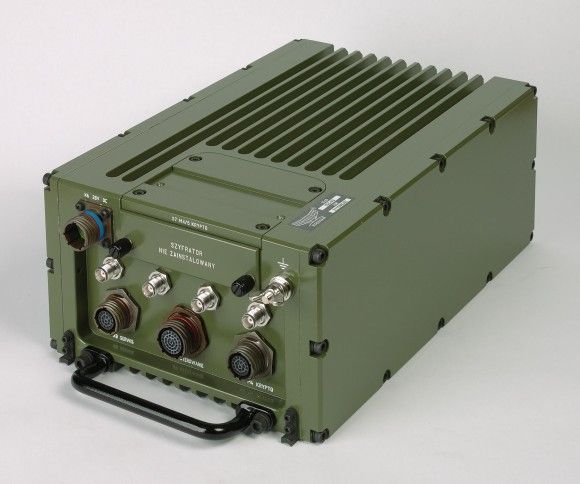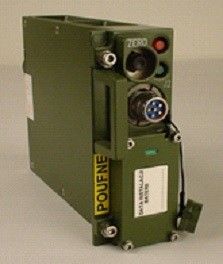Pirat ATGM – A Nexus Between Spike and Anti-Tank Grenade Launchers
Polish defence industry is working on a family of light Pirat ATGMs. It is assumed that this weapons system is to complement both the Spike-LR missiles Poland already owns, as well as the new generation anti tank grenade launchers which are soon to be introduced.
At the moment, the anti-tank capabilities of the Polish Army are based on the medium range Spike-LR anti tank guided missiles which are also expected to be integrated with the armoured combat vehicles, including the Rosomak APC and - further down the road – the new IFV. The quantity of the missiles does not make it possible though to fully meet the requirements of the Army, thus, 9M14 Malyutka missiles which are becoming obsolete are also being used.
One of the methods to enhance the anti tank capabilities, proposed by the experts, is to introduce a light, single purpose weapon into use, being placed between the Spike ATGM listed above and new anti tank grenade launchers which would ultimately replace the RPG-7 weapons system. Such solution, in line with the conceptual assumptions of the Pirat programme, would be significantly cheaper than the missiles guided with an optical fibre/optronic guidance system. This, consequently, would make it possible to introduce it in mass quantities.
The programme’s goal is to have the Polish industry, within the Polish Armaments Group, develop a family of light laser-guided anti tank missiles. The initiative would make use of the expertise gathered before, during the works pertaining to semi-actively laser guided precision munitions, especially the guidance systems.
This type of missiles could be introduced into use both in the operational units, as well as within the newly formed Territorial Defence component. Two variants have been considered, Pirat-1 and Pirat-2, sharing numerous common components, including the gyro-stabilized laser guidance system. The consortium, formed by CRW Telesystem-Mesko and the Military University of Technology is in the process of developing, among other components, a semi-active guidance system and launch solutions for the newly developed missiles offered to the Polish Ministry of Defence.
Pirat-1 project is based on the Ukrainian R-3 Korsar missile offered by the KKB Luch company, nonetheless the collaboration with Ukraine is focused primarily on the aerodynamic component. Pirat-1 is a light, portable shoulder-launched ATGM. The tactical and technical assumptions mention the range of 2500 meters, missile weight of 10.1 kilograms (2.5 kg for the warhead) and diameter of the missile body of 107 mm. In its final form, Pirat would be capable of penetrating up to 550 mm of steel armour covered by ERA. Whereas it is also assumed that fuel-air explosive and high-explosive warheads would also be available for the new weapon.

Pirat-2 variety is a missile of higher velocity, featuring a HE warhead. Most of its tactical and technical parameters is expected to be analogous to the Pirat-1 version. It is assumed though that the time-to-target for the missile, at the longest distance, would be shortened from more than 12 seconds, down to 5.5 seconds. Emphasis is going to be placed on the missile with the HE warhead. The said missile could be used to neutralize machine gun stations, points of resistance, gathering points for the military units, logistics equipment, helicopters or small vessels. The technology demonstrator of the Pirat-2 missile has already gone through the initial field tests.
For the purpose of providing a proper guidance measure, LPC-1 laser target illumination device has been developed too. It may also be used for the purpose of target recognition.
The advantages of the armament systems utilizing the reflected laser beam for the guidance purposes include high level of precision, relatively low cost (as compared with an autonomous active radar or FLIR guidance systems) and high level of safety for the operator and the crew. However, this method has also some disadvantages, including the need to laze the target, which is not always possible, and sensitivity to weather conditions that may be present on the battlefield.
The global trend shows that besides the multi-spectral guidance systems, the development is driven towards provision of joint weaponry that would make it possible to act against armoured units within varied battlefield environments. Attempts are being made to implement designs that would diminish and minimize the risks related to countermeasures and jamming.
In order to increase the effectiveness, the countermeasures shall be varied and interconnected and fused into a single fighting system, due to the presence of active and passive protection systems and options of tailoring the tactics of acting against a specific anti tank weaponry.
The main assumption of the Pirat programme is to be in possession of high quantities of missiles and launchers that could also be utilized in order to fight against targets other than combat vehicles, such as fortifications. The limited cost is also to make it possible to introduce these missiles in mass numbers, also within the Territorial Defence units, which would make it possible to completely replace the obsolete 9M14 missiles or SPG-9 recoilless rifles utilized by the Territorial Defence units (e.g. during the Anakonda 16 exercise). It cannot be ruled out that in the future, a new missile designed on the basis of the Pirat weapons system, a larger calibre ATGM would be developed that could be utilized on vehicles, and which would be fully capable of penetrating the front armour of the contemporary main battle tanks.
Marek Dąbrowski





